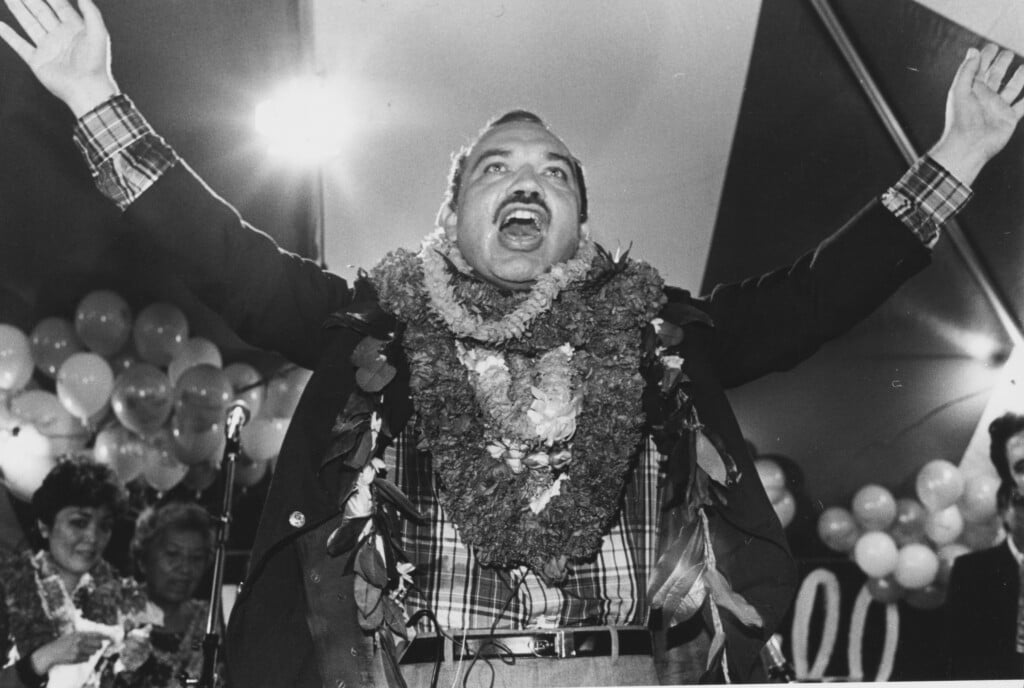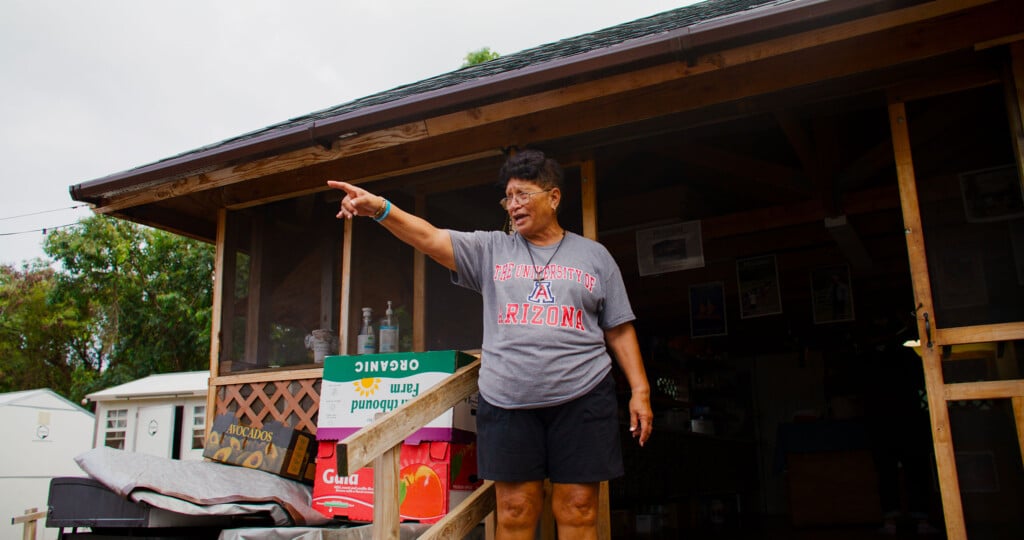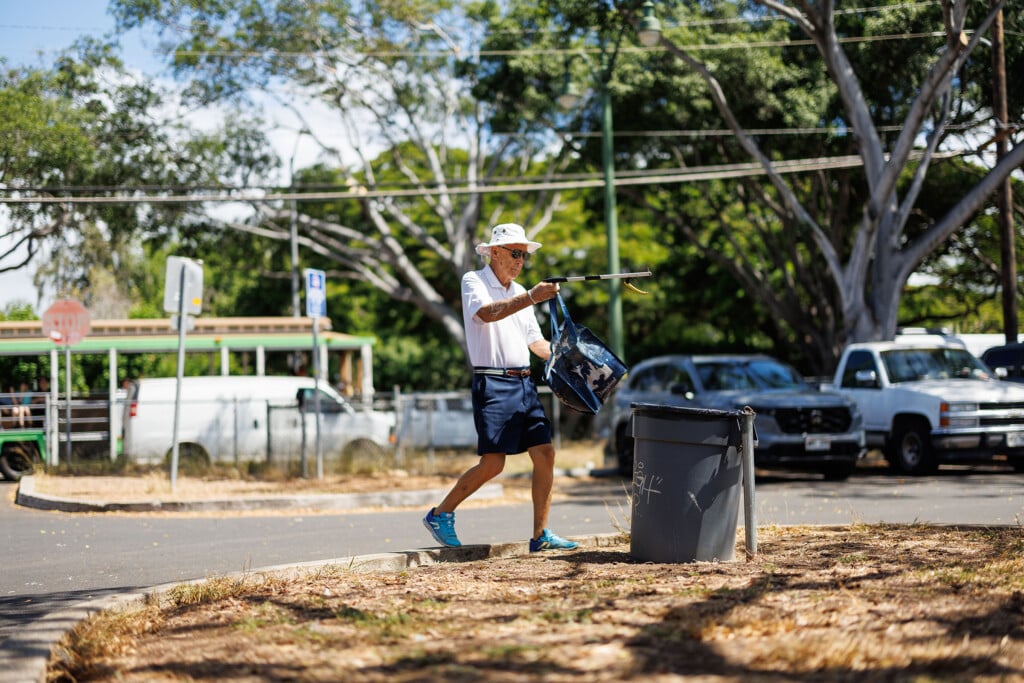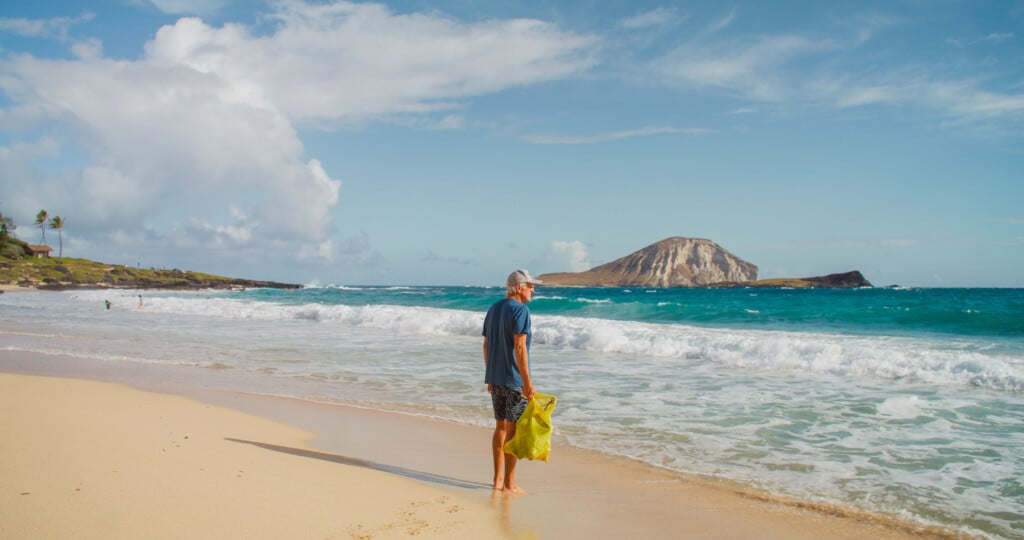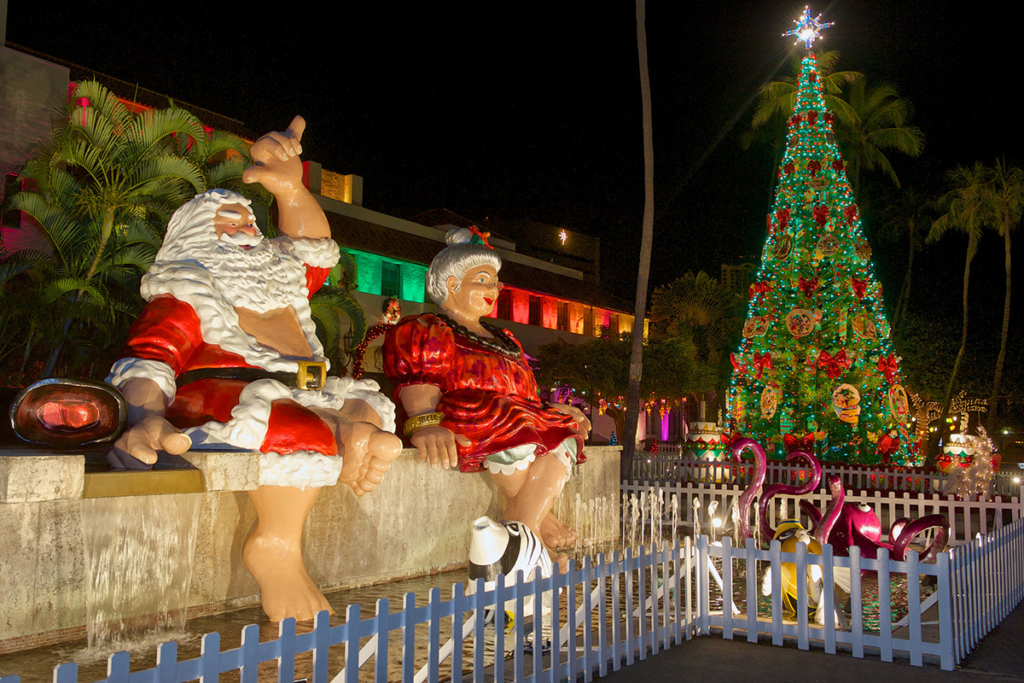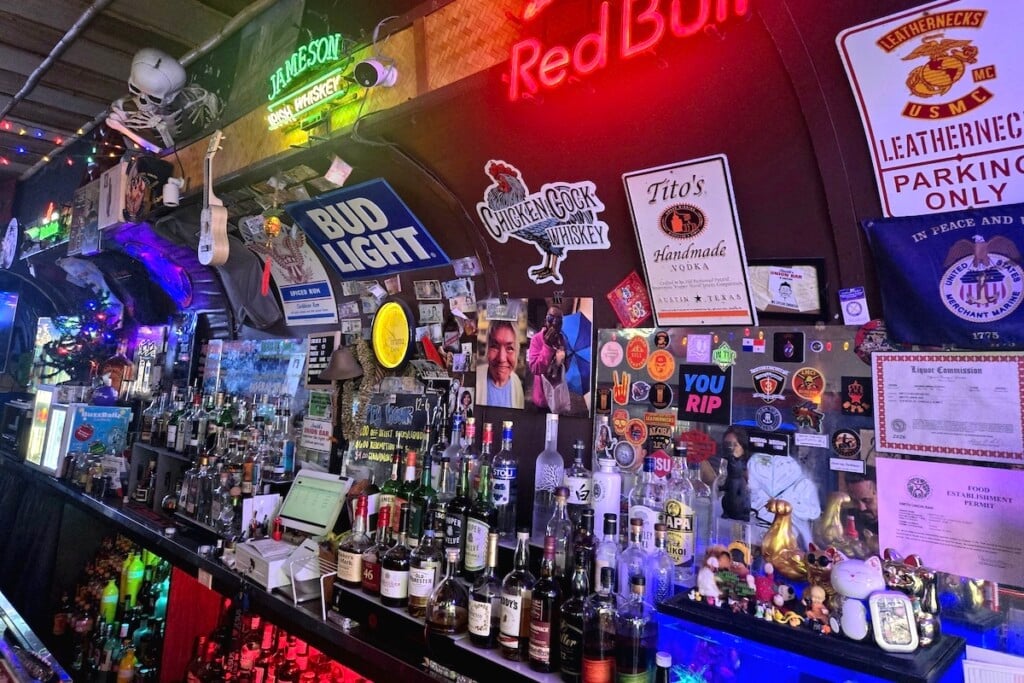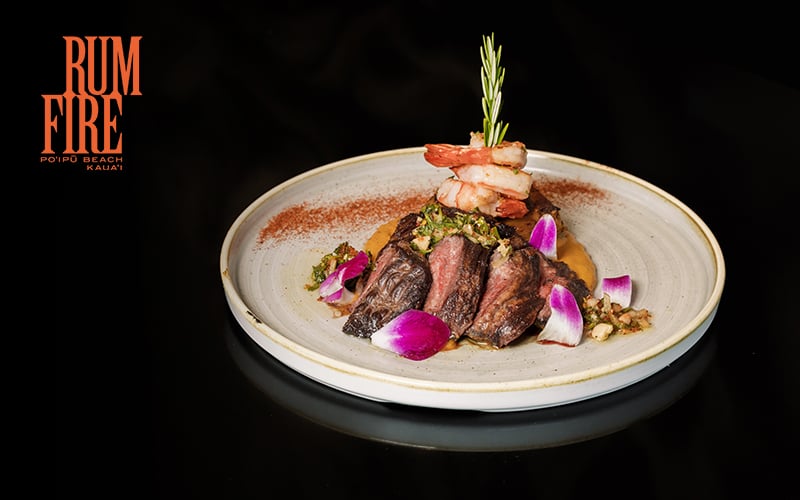The Path to Pro
Pursuing professional sports is an arduous, costly journey, requiring grit and an all-in commitment from young athletes and their families. So why does the dream burn so big in Hawai‘i?
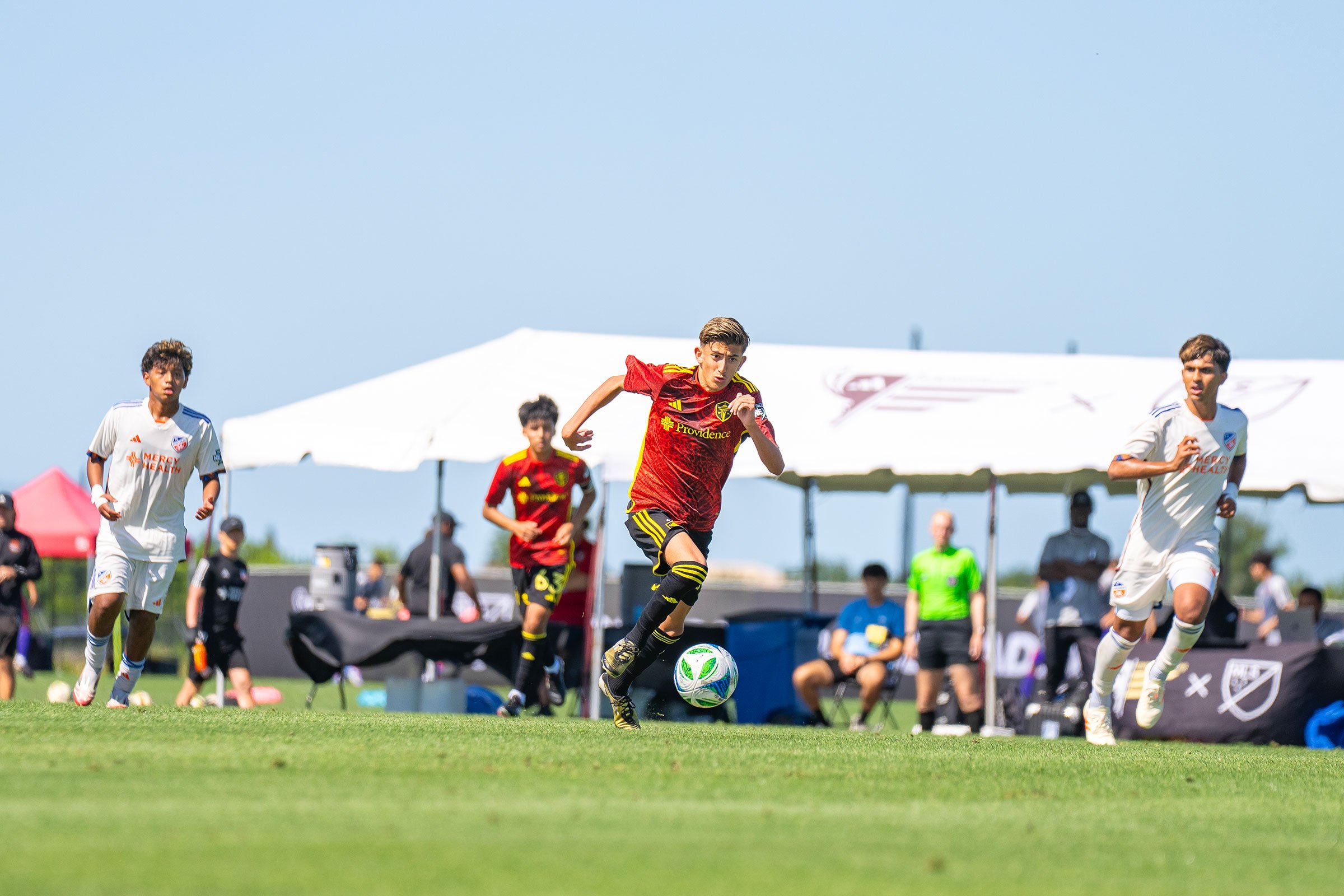
It was just a suggestion.
At age 3, Deyan Radosavljevic’s parents, Wendy and Ivan, signed him up for O‘ahu’s noncompetitive i9 soccer program. Originally from Serbia, Ivan had played soccer at BYU-Hawai‘i, and Wendy volunteered him to be the coach. “Ivan really didn’t want to go down that path with our kids,” she says.
But Deyan loved the game and excelled from the start. When members of the U.S. Olympic Development Program visited the Islands and selected an all-star team, Deyan was tapped as central midfielder.
Then … Wendy takes a deep breath. Deyan received a coveted invitation to id2, which prepares elite youth soccer players for U.S. Soccer’s national team programs. At age 11, Deyan wasn’t just accepted; he was assigned to an age group two years older.
“He was the first kid that young to be selected,” she says. “They had him fly to the continent, everything sponsored by Nike, and there he was selected as one of the top 22 players in the country. We were just amazed and shocked.”
Academies across the country reached out. “Every (Major League Soccer) team has an academy that is a feeder to a pro pathway,” she explains.
Today, 15-year-old Deyan is training full time at an MLS academy in Seattle. A professional career is closer than ever, but it’s come with significant sacrifices. For one thing, Deyan and Ivan now live in Washington, while Wendy has remained in Hawai‘i with their younger son, Dimitri, also a talented soccer player.
As the Radosavljevics have discovered, navigating the path to pro isn’t for the fragile—for a child or parent. Sports are deeply woven into our culture, and with the nonstop buzz about staggering pro contracts and college endorsements, it seems almost rational to go all-in from an early age. But how does the path unfold? What are the sacrifices? The odds?
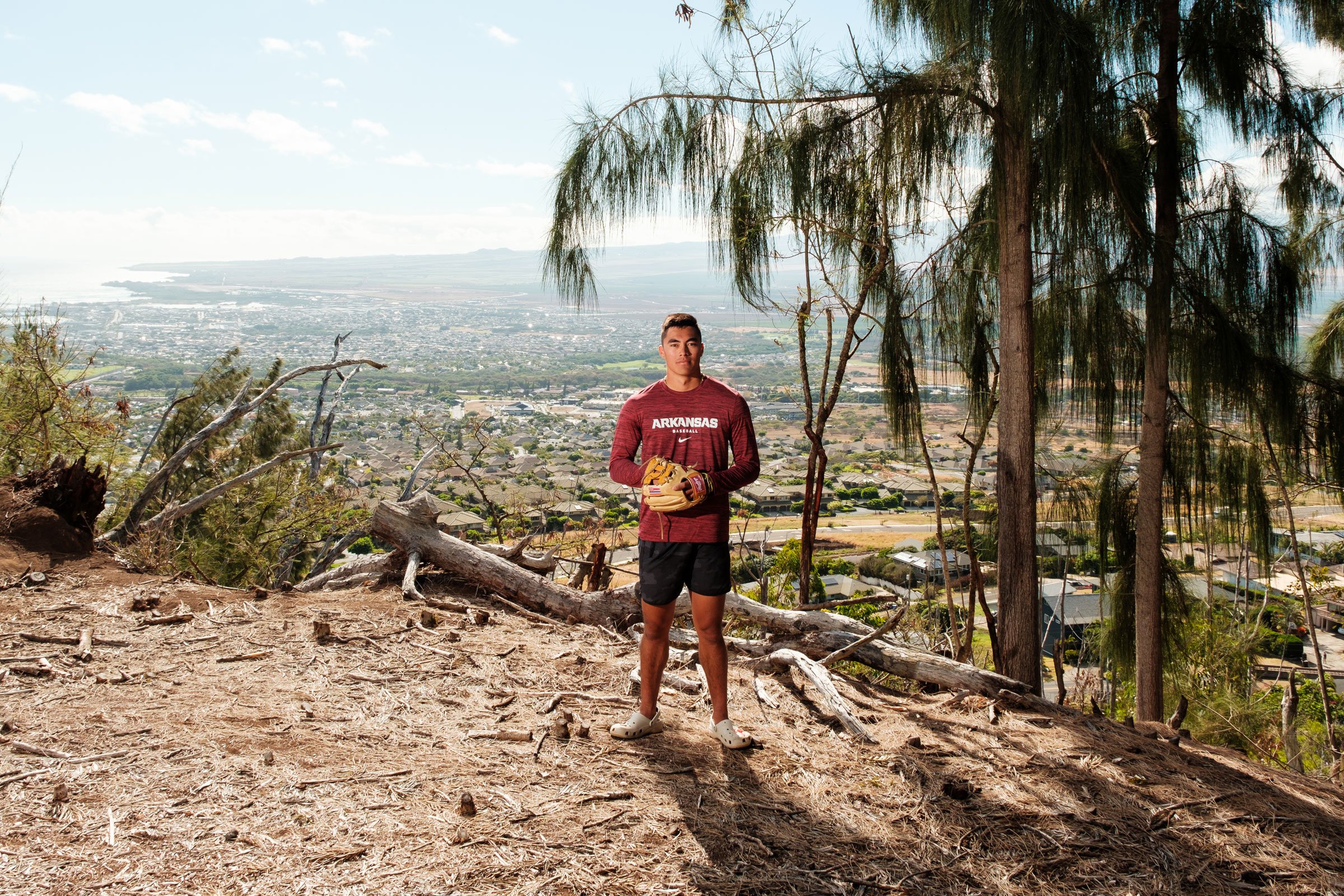
“Off to the PROS”
That’s what the headline of the Honolulu Star-Advertiser’s sports page blared the day after this year’s Major League Baseball draft in July.
Five Hawai‘i players were drafted, two in the first round: No. 7 pick Aiva Arquette, a Saint Louis School grad who played for Oregon State, and No. 31 pick Wehiwa Aloy, a Maui native named the best amateur baseball player in the U.S. while at the University of Arkansas. Drafted in later rounds were Bruin Agbayani, Matthew Miura and Jaxon Grossman. For Arquette and Aloy, guaranteed $7.1 million and $3.1 million signing deals, respectively, it was a dream come true. For Agbayani and Miura, who secured $361,600 and $358,000, it was a downpayment on a dream.
But for their families, there was a sigh of relief. All those years of encouragement and financial support, starting with T-ball and Little League, club teams, school teams, all-star teams, tryouts for scouts and recruiters—and thousands of hours of practice and training—had paid off.
Of course, the draft meant something different for the hundreds of local baseball players not chosen—the inevitable ending for 98% of young athletes in every major sport. Some will head to college to play or, if already in college, persevere, hoping for next year’s draft, or else angle for an invite to the minor leagues.
They still have shots at the majors. Of five Hawai‘i players on MLB rosters as of July, none were top 400 draft picks.
Kaua‘i pitcher Kirby Yates didn’t bother to sign after being the No. 798 pick in the 2005 draft. Instead, he went to community college in Arizona, and over the next decade toiled in the minors. (He had brief stints in the majors—but often for a week or less—only to be sent back down.) Finally, in 2017, he stuck around with the San Diego Padres and in 2019 was selected to the MLB all-star team. Yates, now a Los Angeles Dodger, was an all-star again in 2024 while playing for the Texas Rangers.
The Keiki Sports Economy
As Yates discovered, the road to the pros has many a twist and turn. And we’re not only talking about the big three—football, baseball and basketball—or their underfunded women’s counterparts.
First, though, it’s important to acknowledge the joy in sports and love of the game that are preludes to every young athlete’s success. Clearly, only with passion can a kid contend for alluring incentives and the glory of winning games, championships, all-star selections and MVP awards. And while it’s unlikely young athletes are focused on financial considerations—unless it’s the cost of new kicks or cleats—the economic potential is real for their parents.
More than half of all Division I and II student-athletes receive some level of financial support from their schools, according to the NCAA. And with soaring college costs, a scholarship might be the only way some athletes can afford higher education, especially to schools outside Hawai‘i. Yet securing a scholarship is hardly guaranteed. Only about 2% of high school athletes are awarded athletic scholarships to compete in college, the NCAA reports.
To gain a spot among this elite, young athletes and their parents commit often at a very early age to grinding it out on fields, on courts and in stadiums. Those who can afford it spend the summers and parts of the school year traveling to training camps and competing before recruiters. For geographically distanced Hawai‘i athletes, the investment of time and money is significant.
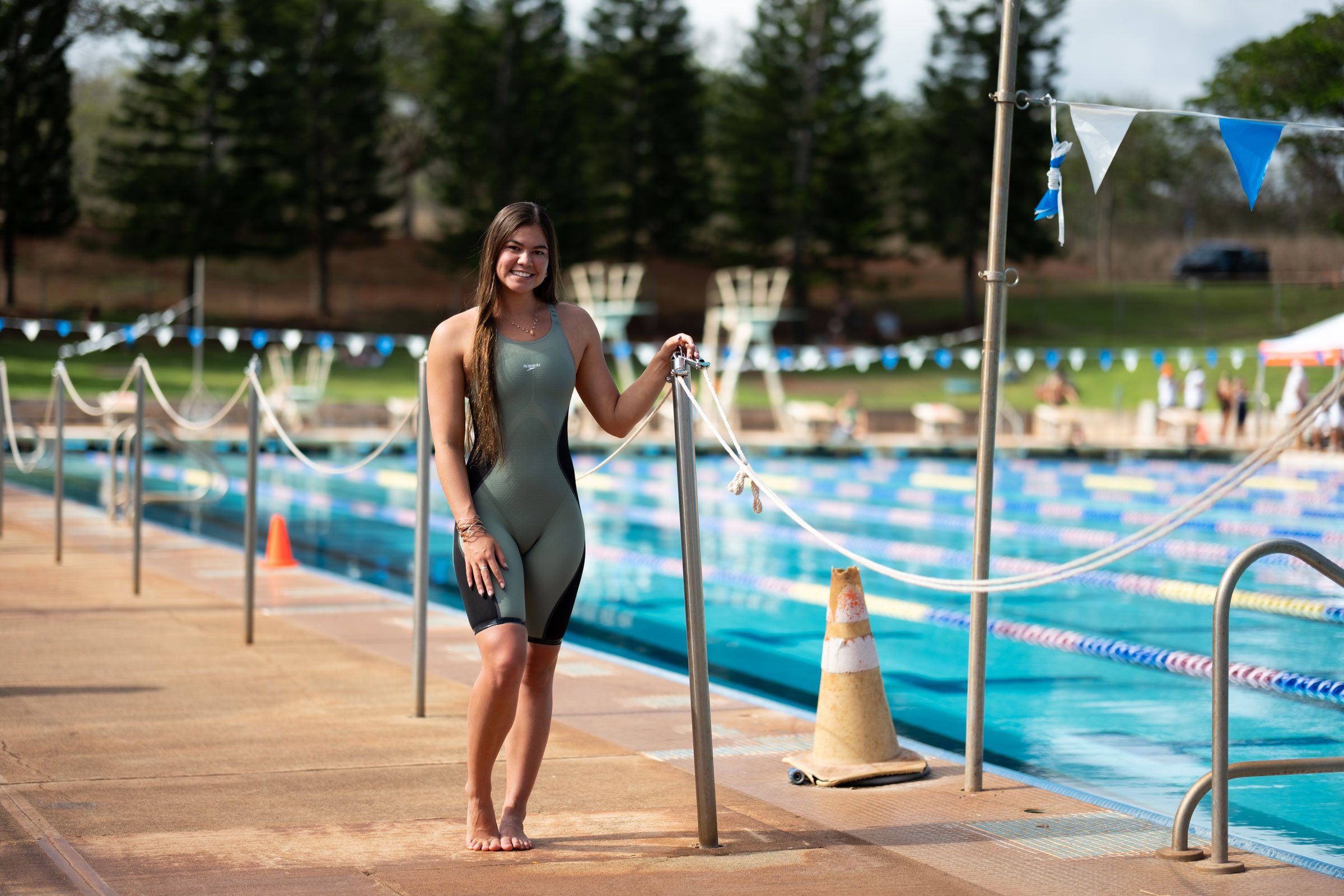
In the Fast Lane
Recent ‘Iolani grad Sage Miller, who won 13 Hawai‘i state championship swim medals during high school, began swimming at age 3; she’s devoted tens of thousands of hours to her sport, training both in the pool and with a personal trainer. Traveling to national swim meets so college coaches could see her compete paid off—she’s now a freshman at USC on a swim scholarship, with aspirations of making the 2028 U.S. Olympic team.
“It does help to go to those big meets because it’s added motivation to drop your time when you’re competing against faster swimmers,” she says. “It’s a bigger stage, and that pushes me.”
Miller’s parents, who both swam competitively for UH, committed early to not just supporting her swim career, but her brother’s at New York University and younger sister’s. “With all of us being swimmers, my parents were definitely invested and involved,” Sage says. “We’re super lucky to have them do that for us.”
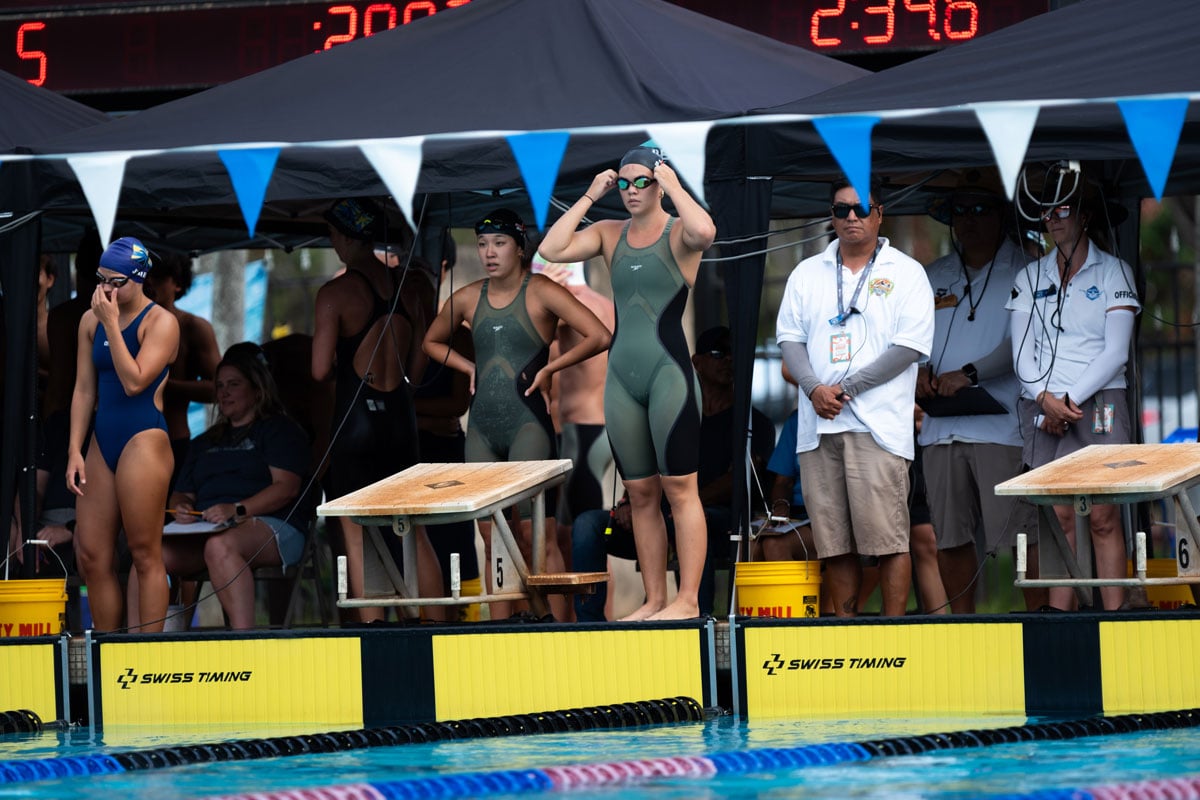
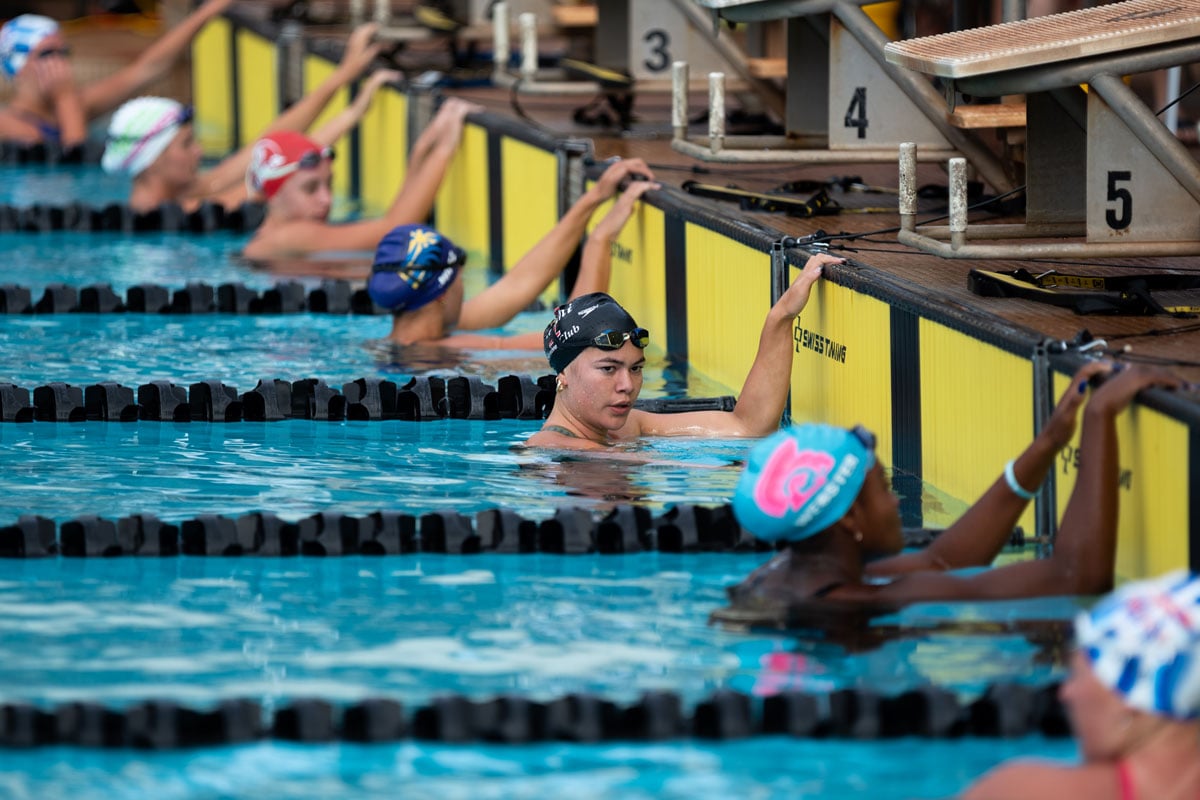
The Big Business of College Sports
The fierce competition for college scholarships, endorsements and payouts, and possible pro careers, has turned youth sports into a lucrative $40 billion-a-year industry, according to a recent New York Times article about how private equity is buying up training facilities, sport camps, tournaments and events.
Since 2021, athletes have been compensated with name, image and likeness fees, commonly known as “NILs.” Some stars, even high schoolers, have received millions of dollars. And the NCAA voted this year to allow colleges and universities to pay athletes directly from a donor pool capped at $20 million annually.
For a multigenerational family in Hawai‘i squeezed into a house or apartment where both parents work multiple jobs, the allure is clear. And the buzz about some high school quarterback getting $12 million to flip colleges might give any ‘ohana pause when their kid throws a perfect spiral across the living room with his Nerf football.
In Hawai‘i, however, NILs aren’t allowed for high school athletes. “Our board didn’t approve it. It’s come up twice and was denied,” says Christopher Chun, executive director of the Hawai‘i High School Athletic Association. The rationale? “It’s because they value the amateurism aspect of sports. And this is the one can of worms we don’t want to open.”
Hawai‘i is one of only eight states to disallow the payments. And while it may not seem directly related, it’s worth noting Hawai‘i is one of two states that doesn’t allow gambling. The result, Chun says, is that instead of obsessing about money, prep athletes here have the luxury of not turning themselves into a brand, at least not yet.
Hawai‘i’s Punch
So far, the restraint on NILs hasn’t hurt Hawai‘i’s outsized impact on national and even international sports.
“I’d say that among our young athletes the mood is upbeat and optimistic,” says Keith Amemiya, chairman of the Governor’s Sports Task Force. “They’ve seen so many local athletes reach the pinnacle in their respective sports. What’s amazing is a small state like Hawai‘i has had four Heisman Trophy finalists: Manti Te‘o, Marcus Mariota, Tua Tagovailoa, Dillon Gabriel. And Mariota won. That’s incredible, right?”
Success breeds high expectations in those following such footsteps. It also opens doors. “In the not-so-distant past, college recruiters mainly came from the Pac-12 and Mountain West conferences,” Amemiya says. “Now Hawai‘i players are being recruited nationally. It’s not uncommon to see our athletes in the SEC and Big 10. And I wouldn’t limit it to football. Just a couple of years ago we had the college softball player of the year, Jocelyn Alo, playing for Oklahoma where she won several national titles.”
There’s a flip side to Hawai‘i protectionism. Football players and parents may well target powerhouse high schools like Bishop Gorman in Las Vegas and California’s St. John Bosco and Mater Dei, negotiate a deal, and move out of state. Those schools have been essentially paying athletes for decades, long before NILs, using a variety of scholarships and inducements, including jobs for parents.
Of course, national exposure is a big lure, and the chief reason numerous local athletes have transferred to West Coast power schools. Five years ago, Micah Alejado’s mom moved with him from ‘Ewa Beach to Las Vegas so he could attend Bishop Gorman on scholarship. In Vegas, the standout quarterback led his team to three consecutive state titles and a MaxPreps national championship. And when Alejado signed with UH, so did Bishop Gorman’s quarterbacks coach, Chad Kapanui.
After an entire season without throwing an interception, the 5-foot-8 Alejado chose to return home to play as a Warrior. Instead of being deemed too small to play, he seems assured of getting his shot among the “Braddahhood.” Waiting in the wings will be another Hawai‘i quarterback from Bishop Gorman, Maika Eugenio, who just enrolled at UH.
Polynesian Athletes in Demand
Sports talent agency The Standard has built its business representing Polynesian athletes. “It’s about having someone who understands the culture and the beliefs,” says Deen Agustin, a Native Hawaiian agent there. “If there’s a complicated family dynamic, having an agent who grew up in that dynamic helps. We’re here to understand their needs and their circle.”
Agustin represents former Campbell High phenom Jaron-Keawe Sagapolutele, an incoming freshman starting quarterback at the University of California, Berkeley, and four other athletes.
So what’s Hawai‘i’s secret sauce?
“Being from a small state in the middle of the Pacific Ocean makes our athletes tougher and hungrier to succeed,” Amemiya says. “Also, they’re a product of a strong family culture. We all support our athletes to reach the highest level. Even our newspaper sports page covers locals more deeply than anywhere.”
Finally, he adds, “because of our close-knit culture, Hawai‘i athletes play not only for themselves but for the entire state.”
Do Start Early
Hawai‘i starts ’em young. At 10, golfer Michelle Wie became the youngest player to qualify for a U.S. Women’s Amateur Public Links Championship and the youngest to qualify for an LPGA tour event. Future Olympic gold medalist and five-time world champion Carissa Moore won her first surf contest at age 11. Titan Lacaden was offered a UH football scholarship at age 11 by then-coach Nick Rolovich, a promise current coach Timmy Chang honored after Lacaden’s standout career at Saint Louis. He’s now a freshman on the roster.
Starting young doesn’t mean specializing, however. Two-time state wrestling champion Zaira Sugui of Moanalua High School played basketball as a child, switched to gymnastics, then volleyball. “When I got older, I started boxing at Powerhouse Gym,” she says. She was 10.
“Boxing started with my dad. He put me and my brother up to it.”
She joined Powerhouse’s boxing club, then something else caught her attention: “There was a wrestling program, and I jumped in. By around 10 and 11, I was boxing and wrestling.”
While competing in the two sports, Sugui says she discovered roughness, aggression and a zest to improve. As a result she’s entering her senior year with an eye on a Division I scholarship to the University of Iowa, where Hawai‘i Olympic medalist Clarissa Chun is the wrestling coach.
Strong Character and Discipline Are Vital
When UH men’s basketball coach Eran Ganot scouts players, he says, he gives them the “soul test.”
“Is this a guy who loves the game, loves the team game, and wants to be coached? We look for high character guys with a work ethic,” Ganot says.
Lacaden didn’t let his head swell up after receiving national publicity for his scholarship offer at 11. Six years later he passed the soul test when, as Saint Louis’ star wide receiver, coach Tupu Alualu needed an offensive spark and moved him to running back. Although considerably undersized at 5-foot-8 and 155 pounds, Lacaden excelled. In the state championship game against Kahuku, he rushed 31 times for 155 yards and two touchdowns as the Crusaders nabbed the title.
What Was His X Factor?
“The boy has a big heart. It’s bigger than his size,” Alualu told the Honolulu Star-Advertiser after Lacaden was selected for the Hawai‘i Hall of Honor for 2025 athletes. “He’s self-motivated.”
Does boxer-wrestler Sugui like working out? “Yes,” she says emphatically. “I work throughout the week. I wrestle, play football here and there, and Monday through Friday am training at the gym with my dad.”
Does she lift weights? “Every day.”
Meanwhile, Deyan Radosavljevic started watching motivational videos when he was 5, his mother says. “Since Deyan was 12, he’s trained six hours every single day. And he’s just turned 15, the age when others start. I wish I’d had his passion and determination and work ethic at his age.”
At his MLS academy, education is not funded, so the Radosavljevics had to figure out how Deyan would continue his schooling after leaving Maryknoll. They ended up going with Pearson, an online, NCAA-accredited program that preserves his eligibility for a scholarship. Even while attending two-week tournaments with his team, including one in Qatar, Deyan is pulling straight A’s.
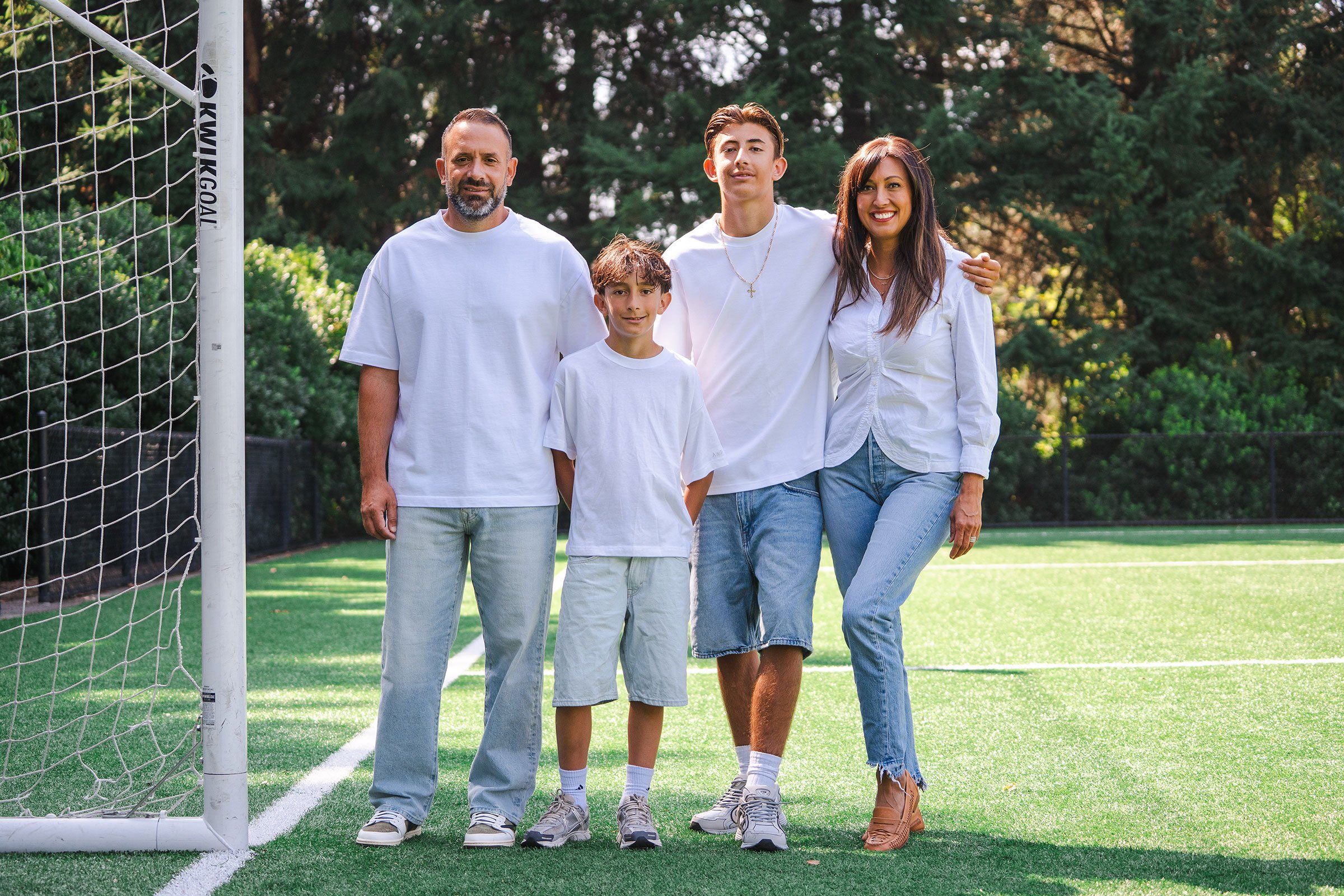
Seize the Day
To launch sports careers, young athletes typically go through camps, tournaments, showcases and combines that double as recruiting services. This means summer travel to the continent.
“It costs a lot to take part in mainland camps, and that makes Hawai‘i kids and their families even hungrier and more appreciative of the opportunities,” Amemiya says. “If you’re a good ballplayer in Southern California, you can drive to a tournament every weekend. If you’re from Hawai‘i, you have to be selective when you can travel to the continent.”
Not everyone can afford it, so those athletes have to do more to be seen.
As a Saint Louis player whose time on the field was hampered by injuries, Marcus Mariota’s shot came when his family sold their O‘ahu home to afford showcases on the continent. He ended up with a scholarship to the University of Oregon, the Heisman Trophy and being drafted to the NFL. Although his pro career has had its ups and downs, he’s excelled as a backup quarterback, currently with the Washington Commanders.
When Sagapolutele couldn’t afford extensive travel to the continent, he went on social media and lured recruiters to his highlights. “He had a low three-star rating,” Agustin recalls. “Later that year, I ended up joining the Standard and flew him out for our camp.”
The Standard got the Campbell star into Elite 11, a national showcase. “He rocketed up the board once he could show his talent in front of a lot of people,” Agustin says. “He wasn’t able to show it at Campbell, but against the top QBs in the country, he had recruiters thinking, ‘Gee, I think he’s the best.’”
Sagapolutele’s now poised for the pros. According to a report by longtime sports recruiting analyst Greg Biggins: “You can make an argument he has the strongest arm in the country but doesn’t just throw all fastballs and has really improved in his ability to change speeds and throw with touch. His deep ball accuracy is among the best in the country as well, and he can really layer the football into tight windows. … (He) has a very high ceiling and NFL potential.”
Knowing When to Stay and When to Go
Sagapolutele’s path, however, has not been entirely linear. After initially signing with Cal, he was lured to Oregon, where both Mariota and Mililani’s Dillon Gabriel had reached superstardom. But after seeing Oregon’s crowded quarterback roster, he returned to Cal when its starting quarterback transferred.
At age 11, Deyan Radosavljevic too was courted by several MLS academies, including the LA Galaxy. “But we literally took an entire year, went really slow, and he went to each academy to try out, feel it,” his mother says.
Initially, Deyan and his parents chose the Austin Football Club’s academy in Texas managed by European League and FIFA World Cup veteran Claudio Reyna. It was cutthroat, then Reyna was implicated in a scandal and resigned. “After that debacle, we had Deyan transfer to the Seattle Sounders where he is now, in his third season,” Wendy Radosavljevic says. “He’s been called up for the U.S. national team a couple of times, in Atlanta and San Diego.”
Indeed, changing positions, schools, training programs and teams is now not just commonplace for aspiring young athletes to reach the next level, it’s critical.
For some athletes with the means and connections, the moves and countermoves resemble a chess game. Baseball player Bruin Agbayani won Position Player of the Year for Saint Louis this year; his father and coach is Benny Agbayani, the former New York Mets sensation. This came after two seasons at ‘Iolani, followed by a transfer to Mililani, and a junior year at Page High School in North Carolina. Now an MLB draft pick, he has a scholarship to play at the University of Michigan as insurance.
The Path of Dillon Gabriel
At 5-foot-11, Gabriel was considered undersized as a quarterback. But Mililani’s 5-foot-11 McKenzie Milton had blazed a trail at the University of Central Florida, and fellow Mililani grad Gabriel got a shot there too.
In his freshman year, Gabriel threw 27 touchdowns and the Knights went 9-3. But his sophomore season was a 6-4 disappointment, and his junior year was cut short by injury.
Instead of standing pat, Gabriel aimed higher, declaring as a transfer for UCLA, then switching to the University of Oklahoma. The Sooners went 6-6 that year but Gabriel threw for 25 touchdowns, and the following year as a fifth-year senior threw for 30 more as Oklahoma went 10-2. With one year of eligibility left, he decided on a final upgrade: He transferred to Oregon, knowing it was loaded with national championship-caliber talent. And he led the Ducks to a 13-1 record, threw 30 touchdowns and was a Heisman finalist.
The culmination of Gabriel’s chase for bigger stages was being drafted in the third round this year by the Cleveland Browns; he signed a four-year rookie contract with the team worth $6.2 million and in August was named the team’s backup quarterback.
Agents Can Wait
When Deyan Radosavljevic was playing in the Generation Adidas Cup, a large and elite global tournament, he was approached by top agencies. “They said they’ve been watching him for quite a while, they’d done write-ups on him, had projected where they could see him going,” Wendy Radosavljevic says. “They think he’s going to have great success.”
“People with no business experience are calling themselves agents, uncles who think they know what they’re doing are advising nephews, and there are a whole lot of false promises thrown around.”
Since Deyan’s goal is to play in Europe, he’ll have to wait until he turns 18. The MLS does sign players as young as 14, but, according to his mother, “the first written contract is such a low amount, like $60,000. You can go to a D-I school and make a lot more money than from an MLS contract. The longer you can wait without an agent the better. Several kids in America who signed at 16 are kind of stuck with that contract now.”
Agent Agustin agrees. “It is pretty intense on the agent side,” he says. “People with no business experience are calling themselves agents, uncles who think they know what they’re doing are advising nephews, and there are a whole lot of false promises thrown around. ‘Oh, I can get you 250K.’ Well, that money’s not there.”
Agustin has had athletes come to him privately with concerns. “They show me a contract they’ve signed and say, ‘What do you think?’ And it’s some of the most exploitative language you’ve ever seen. And these are 16- and 17-year-olds who don’t know better.”
Agustin has three don’ts for young athletes:
“One, if a street agent or coach tells you something and it feels wrong or feels off, it probably is wrong. Two, don’t allow pressure, or people, to make that decision for you. Be really picky, because you are the one making the journey. Three, beware of the online world. Do a lot of research. Make sure this person has a proven track record of success, have them fully explain how this process is going to look.”
In those last two to three months before a draft, don’t put your future in the hands of an agent you’ve talked to six times, Agustin adds. “Go with someone you’ve built a relationship with over a longer time.”
Play the Long Game
As the hopscotch career of pitcher Kirby Yates suggests, perseverance, chasing opportunities and improving over time are key to succeeding at the pro level—assuming a baseline of exceptional talent and good luck.
One of the longest and steepest learning curves en route to the big time happens in golf. Fortunately for Chan Kim, who attended Kaimukī High School, it’s also one of the only sports where 35 isn’t considered retirement age.
After being a standout at the University of Arizona, Kim turned pro in 2010 and played lower circuits—the Canadian Tour, Challenge Tour, Asian Tour—before settling on the Japan Tour, where he won eight tournaments, including the $600,000 Japan Open. He could have stayed in Japan, but his dream was to make it to the PGA, so he joined the Korn Ferry Tour, where winning two tournaments in 2023 gave him the points to qualify for the PGA Tour. “Definitely means the world to me,” he told the media at the time. “This is what I came here to do.”
Since getting his PGA Tour card, Kim has played well, with his 2025 prize money exceeding $900,000, but more importantly, earned points toward keeping his PGA eligibility. The pressure is on, but he’s lining up his shot.
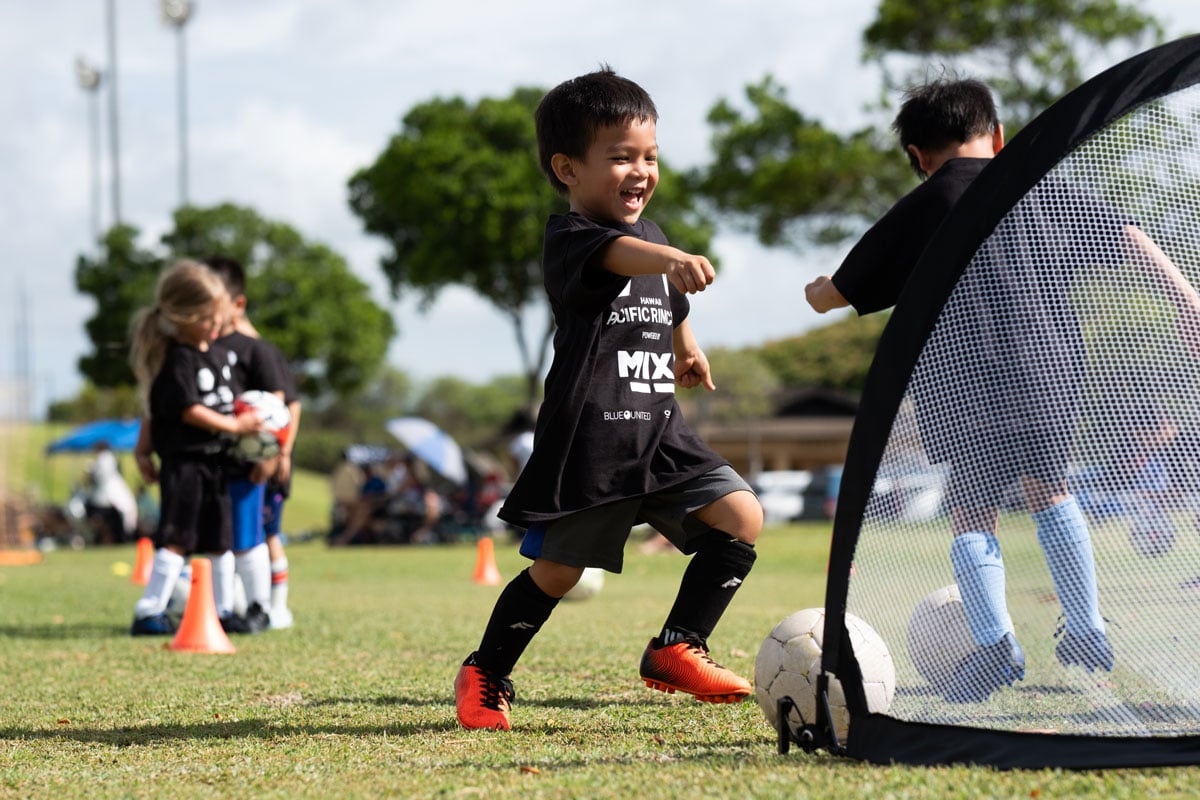
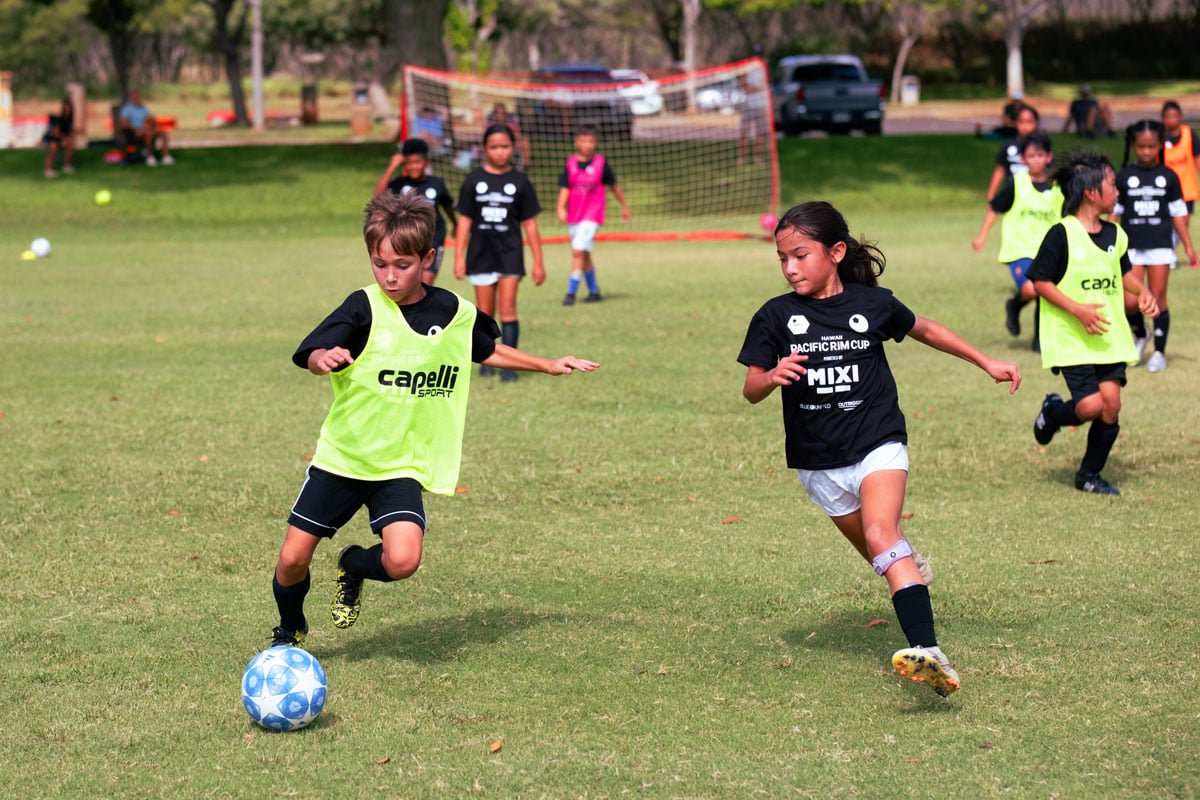
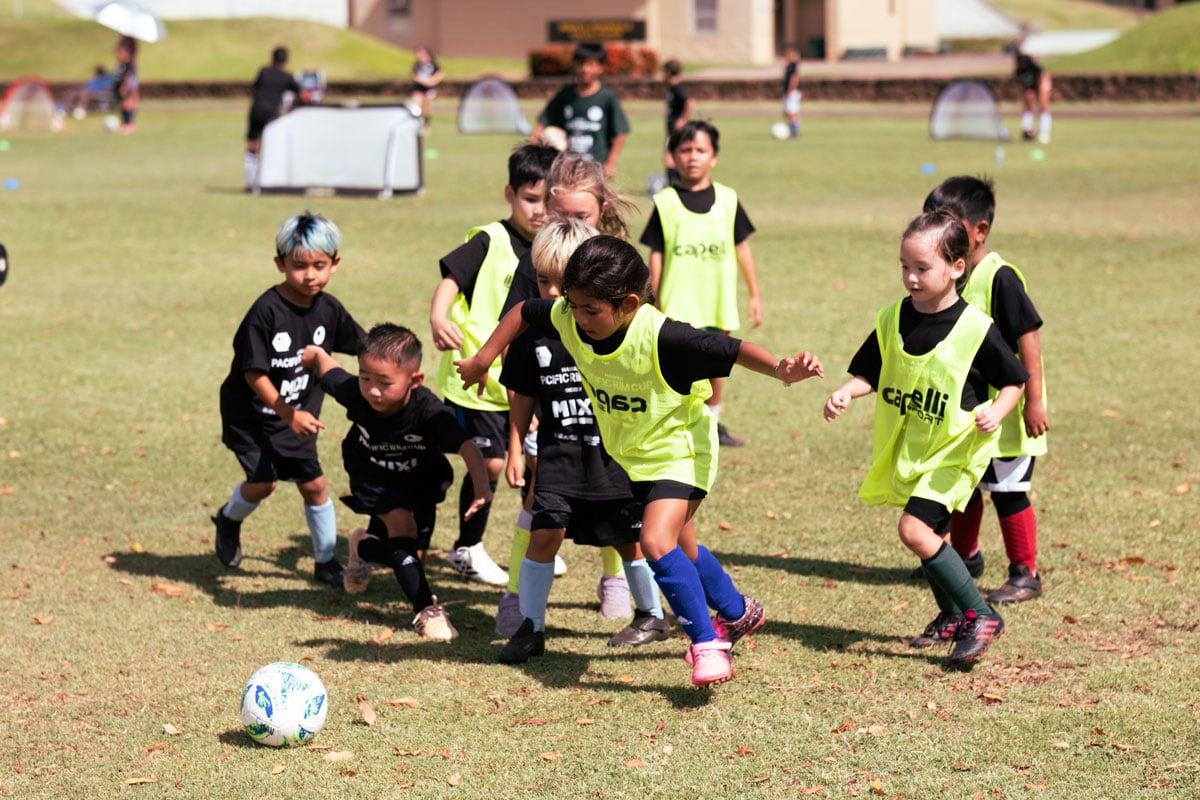
“It costs a lot to take part in mainland camps, and that makes Hawai‘i kids and their families even hungrier and more appreciative of the opportunities.”
— Keith Amemiya
The Path to Pro Is Never Easy
After a successful run playing golf for Kamehameha Schools and UH, earning his way onto the Big West’s first team, 2024 graduate Blaze Akana felt emboldened to try his luck in the pros. He got a taste of the sweet part when competing for two consecutive years at the Sony Open, where he basked in the support of the home crowd.
But after competing with minimal success around the country on the lower circuit, he returned home and is now teaching golf at Waikele Country Club. “I’m taking a little halt,” he says.
Traveling on his own dime was costly and emotionally depleting. “Golf’s one of those sports where you can put in so many hours and still not get the results you want,” he says. “You have to really be dedicated, and fall in love with practicing every single day without expecting results.
“College golf was awesome. Everything is paid for, and you’re traveling with five of your best friends and your coach. Then once you go pro, you’re playing for your paycheck, and you’re paying for everything. And if you don’t play well, you’re going home. It’s a lot tougher when you go pro.”
For MLB draftees as well, once the applause cycle has run, it’s back to the grind. For most, even Arquette and Aloy, getting drafted is just a foot in the door. Now, they’ll disappear from public view for a few years, or even longer, as they prove themselves in the minor leagues.
How long can it take? At 31, pitcher Rico Garcia (Saint Louis, Hawai‘i Pacific University) has been called up or claimed a half a dozen times by MLB teams for short relief stints; he’s appeared in 32 games. In July, the New York Yankees claimed him from the Mets. He was cut loose after a poor outing, and again picked up by the Mets, then the Orioles—all in a week’s time.
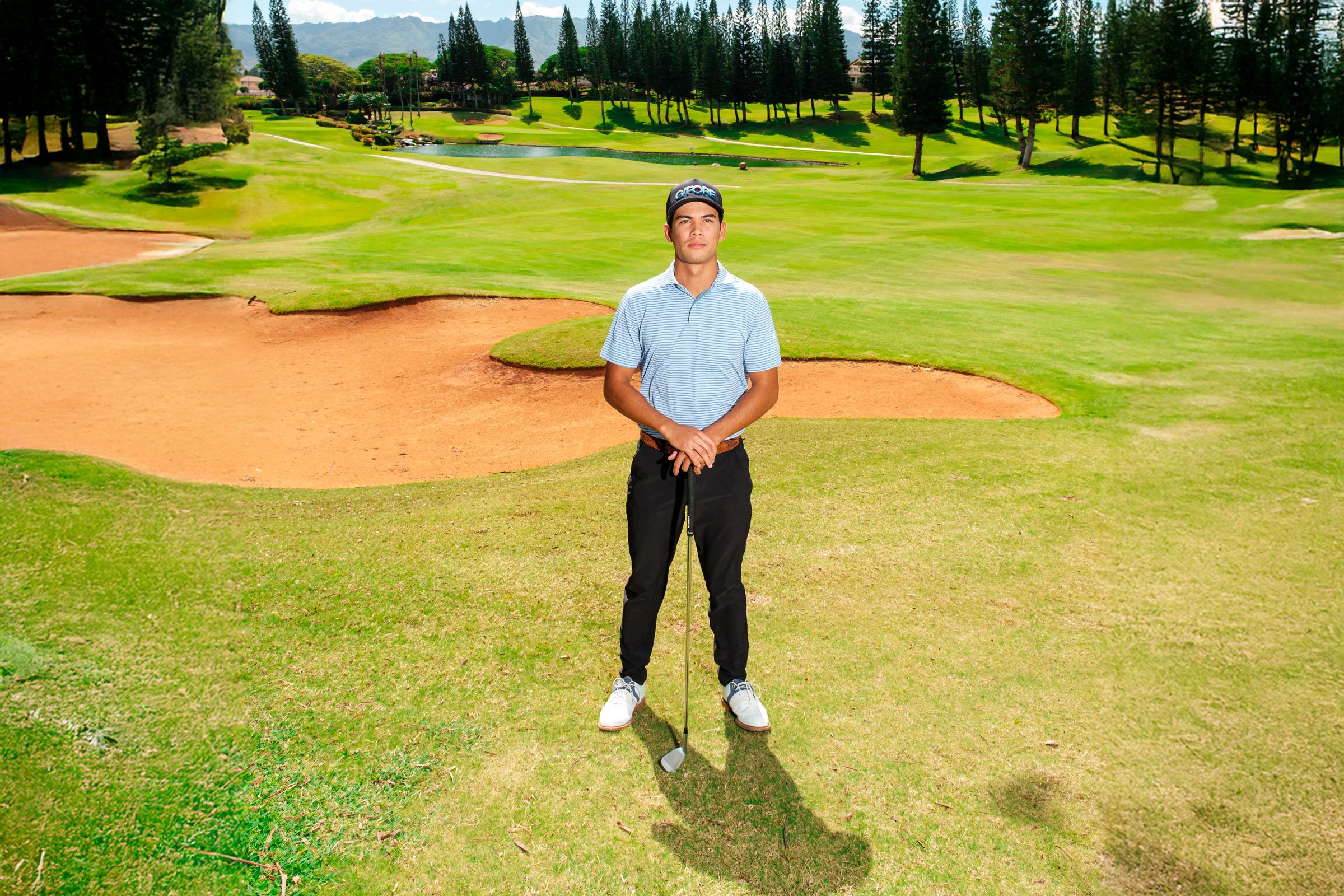
Waiting for Their Shot
Twenty-four Hawai‘i minor leaguers are currently toiling in towns like Lake Erie, Lansing and Wichita. Most are paid a pittance and will never qualify for the one-year minimum MLB salary of $760,000.
But the situation is even less promising in basketball. Hawai‘i’s high schools are not pipelines to either D-I programs or the NBA. In fact, this spring Tolu Smith of Kahuku was the first Hawai‘i player in 68 years to play in an NBA game. He appeared in exactly one game, scoring 14 points and grabbing eight rebounds in 22 minutes for the Detroit Pistons. Local women have fared better finding starting roles in college, usually at West Coast schools.
But getting to the next level is a challenge. One reason, especially for boys, is basketball’s explosive popularity around the globe. To offset the advantages of bigger programs, UH coach Ganot has had to throw a wide net—particularly over Europe. Such globalism raises the ante for local players hoping to stay at home. Even if you do get to the next level and play D-I, the NBA is increasingly out of reach thanks to becoming what The New Yorker recently called a “tutelage sport,” like golf or polo, where it helps to be born into basketball royalty. Of the 450 players on NBA rosters today, 35 are nepo babies, including Bronny James, whose father LeBron nudged the Los Angeles Lakers to draft him.
Still, Ganot and UH have worked out a stealth path to the pros. It involves Europe again, but also Japan, Mexico, South America and dozens of countries where professional leagues field teams in small cities.
“We’ve placed over 20 of our players in the various foreign leagues,” Ganot says. “They can have real careers.”
At the moment, only one local is playing pro overseas—Kahuku and UH grad Samuta Avea, who helped his French team win its first-ever Pro B championship in May.
In volleyball, brothers Kawika and Erik Shoji, both U.S. Olympians, have had similar luck finding spots on European teams. While Kawika is now retired, Erik continues to play in Poland, where his Zaksa team has won four Polish League trophies since he joined in 2021.
Ignore the Odds
“His goal is to get to Europe,” Wendy Radosavljevic says of Deyan. She knows the odds, having listened to speakers. “Maybe one or two of your kids will make the pros—that’s out of 50 to 60 kids” in the elite MLS program, she was told.
Yet the way she sees it, there are options. “Each kid needs to know his own plan A and plan B. Some are very realistic and just want to go to college on scholarship, others maybe want a D-I school,” she says.
Sound advice, just not for Deyan. “There is no backup plan,” she sighs. “I do think his future will take him to Europe. His hard work, his work ethic … you have to have a bit of luck, but he’ll end up in Europe playing soccer.”
Meanwhile, Deyan’s younger brother, Dimitri, is also a talented player with pro ambitions. “We’ll follow them as much as we can,” she says.
Don Wallace is a contributing editor of HONOLULU Magazine.
